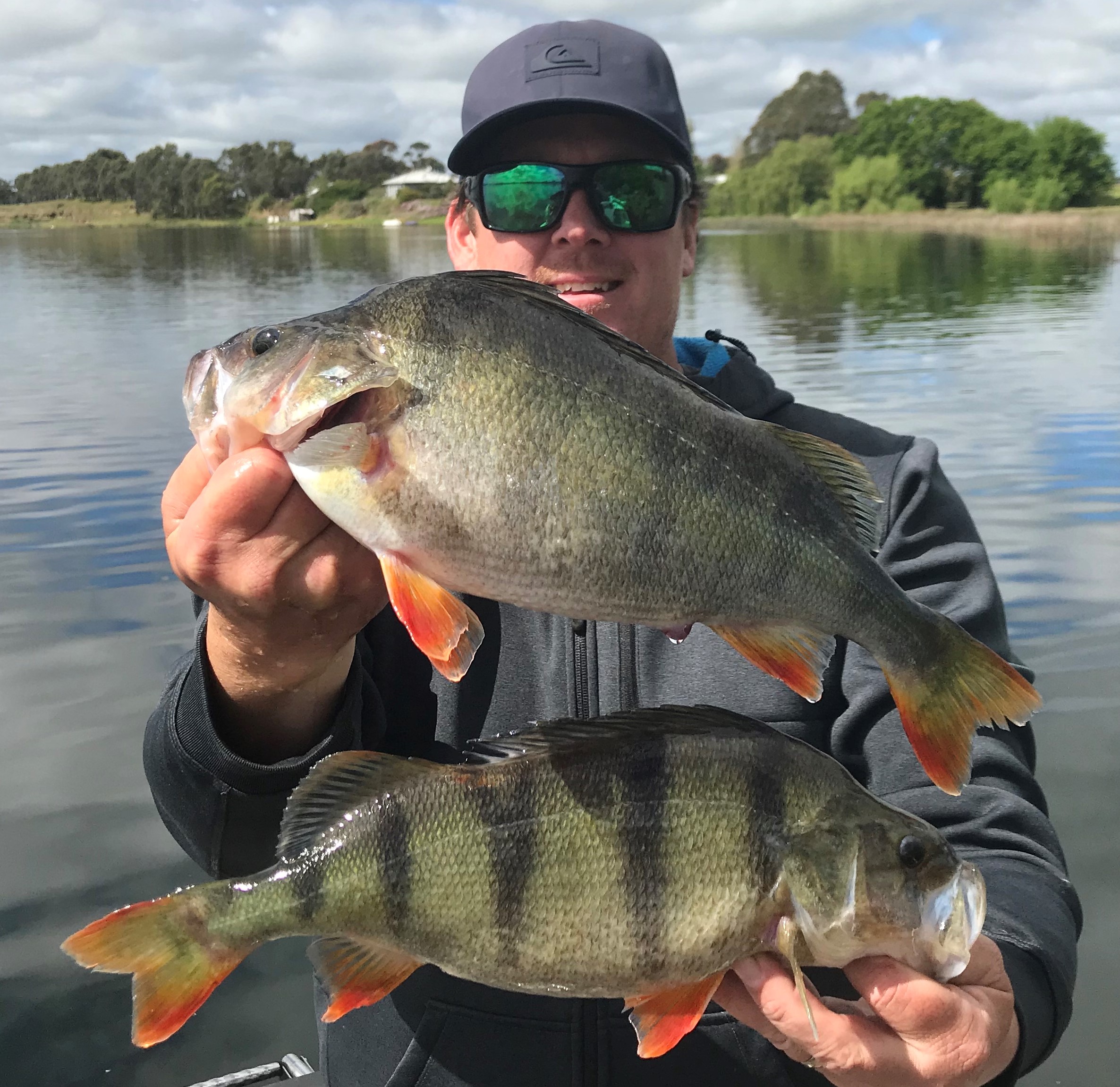How to catch redfin
Lake fishing
Redfin often turn up when fishing for golden perch or trout however success is more often enjoyed when specific techniques and locations are employed. Redfin are aggressive schooling fish and respond well to baits and lures so if one approach isn’t working, it pays to mix things up. Their preferred habitat in lakes can vary but they’ll usually be found near structure such as submerged logs, rock walls, weed beds or standing timber ranging from large, submerged trees to thin, spindly shrubs. Redfin sometimes swarm around the base of large trees in 30 or 40ft or can be sitting in the treetops near the surface chasing baitfish. A sounder is a great asset to find redfin schools, especially in open water when they’re feeding on schools of baitfish.
Trolling
Redfin tend to school up together and a big part of catching a haul is finding them in the first place. Not many people troll for redfin, but it’s a great way to locate a school. Sometimes, fishers targeting golden perch on the troll come across an aggregation of redfin and decide to switch target species. Success on redfin can be had in lakes by trolling small, bibbed crankbaits or deep divers, lipless crankbaits and even soft plastics at depth ranges from four to 12 metres, or even less in shallow lakes.
Trolling is better done along banks with less timber or in areas where there’s large dead trees standing vertically in the water. The downside to trolling is getting hung up. A balance must be struck between fishing a likely zone and not being constantly snagged! Once redfin are found this way, turn around and go over the area again for repeated hookups.
Boat-based lure casters
Redfin are usually caught in lakes by fishing vertically in amongst trees, taking up a stationary position in the boat and dropping baits or lures down to them. Move every 20 minutes or so until an active school is located, or to find a better size class of redfin. Small soft plastic lures, vibes and ice jigs are all effective lures in these circumstances. Aggressive hops and pauses with lures can ignite an aggressive and competitive response. At other times a stationary soft plastic 2ft off the bottom attracts a softer bite.

Bait fishers
Bait fishing for reddies is the preferred technique for most freshwater fishers. Earth worms, small yabbies and freshwater shrimp all work well, as do locally sourced gudgeon. With bait fishing it pays to use rigs that keep your bait anchored relatively in the same position to avoid getting snagged too much. A running sinker or a paternoster/dropper rig can be paired with a size #1 hook. Concentrate efforts around standing timber and move often if not getting a bite. In Lake Purrumbete, reddies are often encountered in open water, well away from structure. This is where a good depth sounder really pays dividends.
Shore-based fishers
Walking or wading around a lake with a spin rod and lures is a great way to actively target redfin. Ten casts, fanned out so no one cast goes exactly where the previous one went, is a wonderful way to explore the water and cover ground. Move along the bank 20 metres and repeat the process. This prospecting style of fishing is effective using the same lures used to troll, with the addition of spinners which redfin love! Let the lures sink to varying depths too in case the fish are holding a bit deeper. Soft plastics that sink and are fished on a jig head with only one hook can be fished along the bottom more aggressively than lurs with trebles. It’s all about minimising the risk of snagging on the bottom whilst thoroughly exploring all parts of the water column. Longer rods will help cast further to cover more water, so a 7 to 7.5-foot medium actioned rod with a 2500 sized reel, 3kg braided line and 3 or 4kg leader of about 6 foot is perfect. Bait fishers should add a rod holder that can be pushed into soft shoreline to anchor the rod and ensure it doesn’t skate off into the water.
